After our early morning excursion to watch devotees conduct their ritual ablutions in the Ganges we returned to the hotel for breakfast and to meet up with Josh who had decided to sleep in. We're heading off to Sarnath which is just over 10km north east of Varnasi and 15 or so minute's drive in the minibus.
Sarnath
We can't do justice to the entire complex at Sarnath, which includes monuments, temples and the archaeological museum in just a morning, so we have to settle for selected highlights.
After attaining enlightenment it was here, at Sarnath, that Buddah gave his first teaching or discourse known as the Dhammacakkappavattana Sutta or Setting in Motion of the Wheel of Dharma. Mentioned by the Buddha as one of the four places of pilgrimage which his followers should visit, Buddhism flourished at Sarnath, where in the 7th century there were some 30 monasteries and 3,000 monks living here.
Most of the ancient buildings and structures at Sarnath were either damaged or destroyed by Turkish Muslims at the end of the 12th century. The site was abandoned and left deserted until 1836 when excavation and restoration began under the British. Today Sarnath is a site for modern pilgrims and tourists.
Mulagandhakuti Vihara
The new monastery was built in the 1930s by the Sri Lankan Buddhist Mahabodhi Society with beautiful wall paintings or murals inside which depict the major events of Buddha's life. We spend some time in here looking at the murals before walking around the monastery grounds and the rest of the site.
Whilst walking in grounds of the new monastery we take time look at all the prayer flags and the larger than life recreation of Buddha delivering his first teaching to the five disciples all of whom are shrouded in saffron robes.
Also located in the grounds of the new monastery is the World Peace Bell.
World Peace Bell
Construction of this World Peace Bell began on March 17, 2005.
When the bell was ready for dedication, the Maha Bodhi Society's Sangha gathered to chant the Dharmacakkappavattana Sutta, the Buddha's first teaching.
The inscription on the bell reads:
Homage to Buddha, Dharma, and Sangha. To the Bhagavan Buddhas, Bodhisattvas, Arhats, and Eighty-Four Siddhas, the holders of the lineage of enlightenment, we offer our heartfelt prayers. Each time this Dharma Bell rings out at Sarnath, where the Buddha first turned the Wheel of the Dharma, may the sound of the bell evoke blessings in this dark time of the Kaliyuga, to restore universal peace and harmony throughout time and space and assure the longevity of the Tipitaka until the time that Maitreya again turns the Dharmacakra.
We are told that the bell, which can be heard up to 7 km away, has provided a new focal point for worship for the Sarnath community.
Dhamek Stupa (Dhamekh and Dhamekha)
Stupas originated as circular mounds encircled by large stones. King Ashoka built a number of stupas to enshrine small pieces of calcinated bone and other relics of the Buddha and his disciples.
The Dhamek Stupa (above) was built in 500 CE to replace an earlier structure commissioned by King Ashoka in 249 BCE, along with several other monuments, to commemorate the Buddha's activities in Sarnath. The stupa was enlarged on six occasions but the upper part is still unfinished. The stupa is a solid cylinder of bricks and stone, at just over 43m high and 28m in diameter, it is the largest structure in Sarnath.
The stone facing is chiseled and has delicate floral carvings of Gupta origin. The wall is covered with exquisitely carved figures of humans and birds, as well as inscriptions in the Brahmi script.
Circumambulation of temples or deity images is an integral part of Hindu and Buddhist devotional practise. Buddhist pilgrims from around the world visit Sarnath to circumambulate this sacred Stupa and to offer worship to Buddha. We too circumambulate, walking round trying to think divine thoughts.
Pillar of Ashoka
The pillar of Ashoka at Sarnath is one of a series of columns erected throughout the northern Indian subcontinent, erected or at least inscribed with edicts by King Ashoka during his reign in the 3rd century BC. It is believed that there were numerous pillars of which only nineteen survive - just six with animal capitals - the remainder having been destroyed by Muslims.
Many pillars, like the column at Sarnath, are preserved in a fragmentary state. Averaging between 40 to 50 feet (12 to 15 m) in height, and weighing up to 50 tons each, the pillars were dragged, sometimes hundreds of miles, to where they were erected.
The pillar at Sarnath was originally surmounted by a capital of four lions, seated back to back, the so called "Lion Capital of Asoka" . The capital was broken during a Turkish invasion and is now displayed in the museum on site. The capital has been adopted as the National Emblem of India and the wheel "Ashoka Chakra" from its base was placed onto the centre of the flag of India. The lions probably originally supported a Dharma Chakra wheel with 24 spokes.
Modern temples
There are a number of modern temples at Sarnath including the Sridigamber Jain temple which is just behind the Dhamek Stupa.
Despite the large groups of devotees as well as tourists like us the site is remarkably peaceful and tranquil, with lush green manicured lawns and well-tended flowers and shrubs providing a burst of colour here and there. It is probably heresy, but the stupas, at least in their desecrated state, look rather like brick kilns.
Walking along the paths the foundations or footings of the monasteries and monastic buildings which once stood on this site are visible and provide a life-size floor plan. Sitting under the shade of a tree or walking around the stupa it is hard to imagine what this place would have been like at its zenith with 30 monasteries and some 3,000 monks!
We finish our tour with a visit to the museum.
Archaeological Museum Sarnath
http://www.sarnathmuseumasi.org/
The museum is an unexpected treat, small but perfectly formed.
There are five galleries and two verandahs in the museum to display the antiquities found at Sarnath. It is an opportunity to see significant pieces such as the lion capital from the Asokan pillar and the image of the Bodhisattva in red sandstone. There are numerous artefacts from the site on display and this is an opportunity to see close up some of the craftsmanship and detail from bas reliefs, sculptures and even everyday objects such as pottery.
Sarnath - Starting the Wheel of the Dharma
Wednesday, August 17, 2011
 Sarnath, Uttar Pradesh, India
Sarnath, Uttar Pradesh, India
Other Entries
-
1A Passage to India
Aug 089 days prior London, United Kingdomphoto_camera0videocam 0comment 0
London, United Kingdomphoto_camera0videocam 0comment 0 -
2Looking for the real India...
Aug 098 days prior Delhi, Indiaphoto_camera8videocam 0comment 0
Delhi, Indiaphoto_camera8videocam 0comment 0 -
3New day - New Delhi
Aug 107 days prior Delhi, Indiaphoto_camera25videocam 0comment 0
Delhi, Indiaphoto_camera25videocam 0comment 0 -
4On the road to Rajasthan
Aug 116 days prior Delhi, Indiaphoto_camera9videocam 0comment 0
Delhi, Indiaphoto_camera9videocam 0comment 0 -
5Jaipur - The pink city
Aug 116 days prior Jaipur, Indiaphoto_camera14videocam 0comment 0
Jaipur, Indiaphoto_camera14videocam 0comment 0 -
6From Palace of Winds to Stargazing and City Palace
Aug 125 days prior Jaipur, Indiaphoto_camera49videocam 0comment 0
Jaipur, Indiaphoto_camera49videocam 0comment 0 -
7From pink city to ghost city
Aug 134 days prior Jaipur, Indiaphoto_camera9videocam 0comment 0
Jaipur, Indiaphoto_camera9videocam 0comment 0 -
8The Jewel in the Crown
Aug 134 days prior Fatehpur Sikri, Indiaphoto_camera22videocam 0comment 0
Fatehpur Sikri, Indiaphoto_camera22videocam 0comment 0 -
9A grand night in Agra
Aug 134 days prior Agra, Indiaphoto_camera7videocam 0comment 0
Agra, Indiaphoto_camera7videocam 0comment 0 -
10Taj Mahal - Crown of palaces
Aug 143 days prior Agra, Indiaphoto_camera24videocam 0comment 0
Agra, Indiaphoto_camera24videocam 0comment 0 -
11All aboard the Shatabdi Express
Aug 152 days prior Agra, Indiaphoto_camera2videocam 0comment 0
Agra, Indiaphoto_camera2videocam 0comment 0 -
12On the road from Jhansi to Khajuraho
Aug 152 days prior Jhansi, Indiaphoto_camera8videocam 0comment 0
Jhansi, Indiaphoto_camera8videocam 0comment 0 -
13Temple "..."in the presence of God"
Aug 152 days prior Khajuraho, Indiaphoto_camera19videocam 0comment 0
Khajuraho, Indiaphoto_camera19videocam 0comment 0 -
14Temples
Aug 161 day prior Khajuraho, Indiaphoto_camera35videocam 0comment 0
Khajuraho, Indiaphoto_camera35videocam 0comment 0 -
15From spiritual life to village and school life
Aug 161 day prior Rajnagar, Indiaphoto_camera14videocam 0comment 0
Rajnagar, Indiaphoto_camera14videocam 0comment 0 -
16Aarti on the Ganges
Aug 161 day prior Varanasi, Indiaphoto_camera17videocam 0comment 0
Varanasi, Indiaphoto_camera17videocam 0comment 0 -
17Morning ritual on the Ganges
Aug 17earlier that day Varanasi, Indiaphoto_camera26videocam 0comment 0
Varanasi, Indiaphoto_camera26videocam 0comment 0 -
18Sarnath - Starting the Wheel of the Dharma
Aug 17 Sarnath, Indiaphoto_camera31videocam 0comment 0
Sarnath, Indiaphoto_camera31videocam 0comment 0 -
19Leaving Varanasi or bye bye Benares
Aug 181 day later Varanasi, Indiaphoto_camera0videocam 0comment 0
Varanasi, Indiaphoto_camera0videocam 0comment 0 -
20Transit Delhi
Aug 181 day later Delhi, Indiaphoto_camera1videocam 0comment 0
Delhi, Indiaphoto_camera1videocam 0comment 0 -
21Overnight luxury in boom town
Aug 181 day later Gurgaon, Indiaphoto_camera0videocam 0comment 0
Gurgaon, Indiaphoto_camera0videocam 0comment 0 -
22Return trip to Delhi airport
Aug 192 days later Gurgaon, Indiaphoto_camera2videocam 0comment 0
Gurgaon, Indiaphoto_camera2videocam 0comment 0 -
23From Delhi to Dabolim
Aug 192 days later Delhi, Indiaphoto_camera1videocam 0comment 0
Delhi, Indiaphoto_camera1videocam 0comment 0 -
24Goa
Aug 192 days later Dabolim, Indiaphoto_camera0videocam 0comment 0
Dabolim, Indiaphoto_camera0videocam 0comment 0 -
25Where the boys go!
Aug 192 days later Sinquerim, Indiaphoto_camera0videocam 0comment 0
Sinquerim, Indiaphoto_camera0videocam 0comment 0 -
26Another day, another hotel
Aug 203 days later Sinquerim, Indiaphoto_camera0videocam 0comment 0
Sinquerim, Indiaphoto_camera0videocam 0comment 0 -
27Roadside to Poolside
Aug 214 days later Sinquerim, Indiaphoto_camera15videocam 0comment 0
Sinquerim, Indiaphoto_camera15videocam 0comment 0 -
28Sunshine and showers in Calangute
Aug 225 days later Sinquerim, Indiaphoto_camera16videocam 0comment 0
Sinquerim, Indiaphoto_camera16videocam 0comment 0 -
29Shopping in Calangute
Aug 236 days later Sinquerim, Indiaphoto_camera1videocam 0comment 0
Sinquerim, Indiaphoto_camera1videocam 0comment 0 -
30POSH - Port Out, Starboard Home
Aug 247 days later Sinquerim, Indiaphoto_camera1videocam 0comment 0
Sinquerim, Indiaphoto_camera1videocam 0comment 0 -
31Postscript
Aug 258 days later London, United Kingdomphoto_camera0videocam 0comment 0
London, United Kingdomphoto_camera0videocam 0comment 0

 Sarnath, Uttar Pradesh, India
Sarnath, Uttar Pradesh, India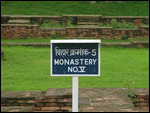
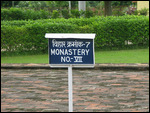
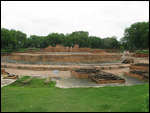

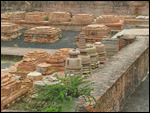
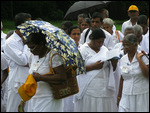
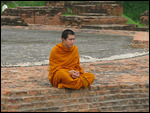
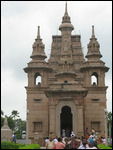
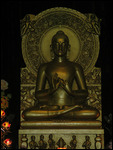
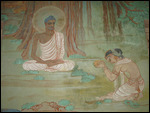
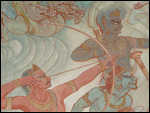
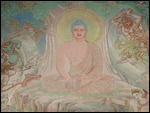
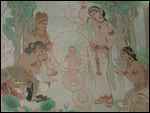
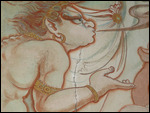
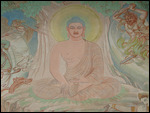

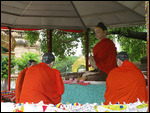
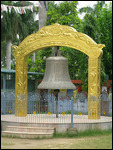
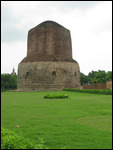
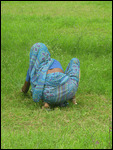




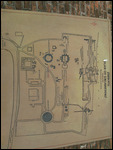
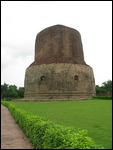
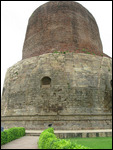
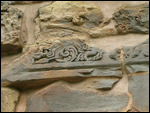

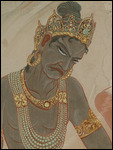
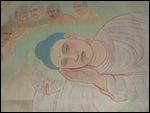
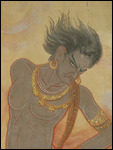
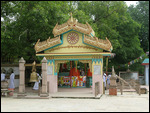
2025-05-23